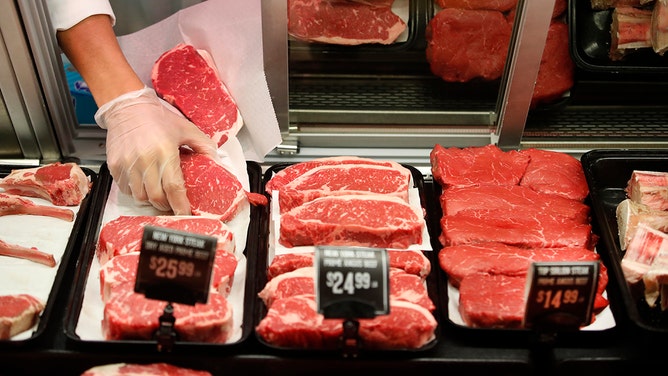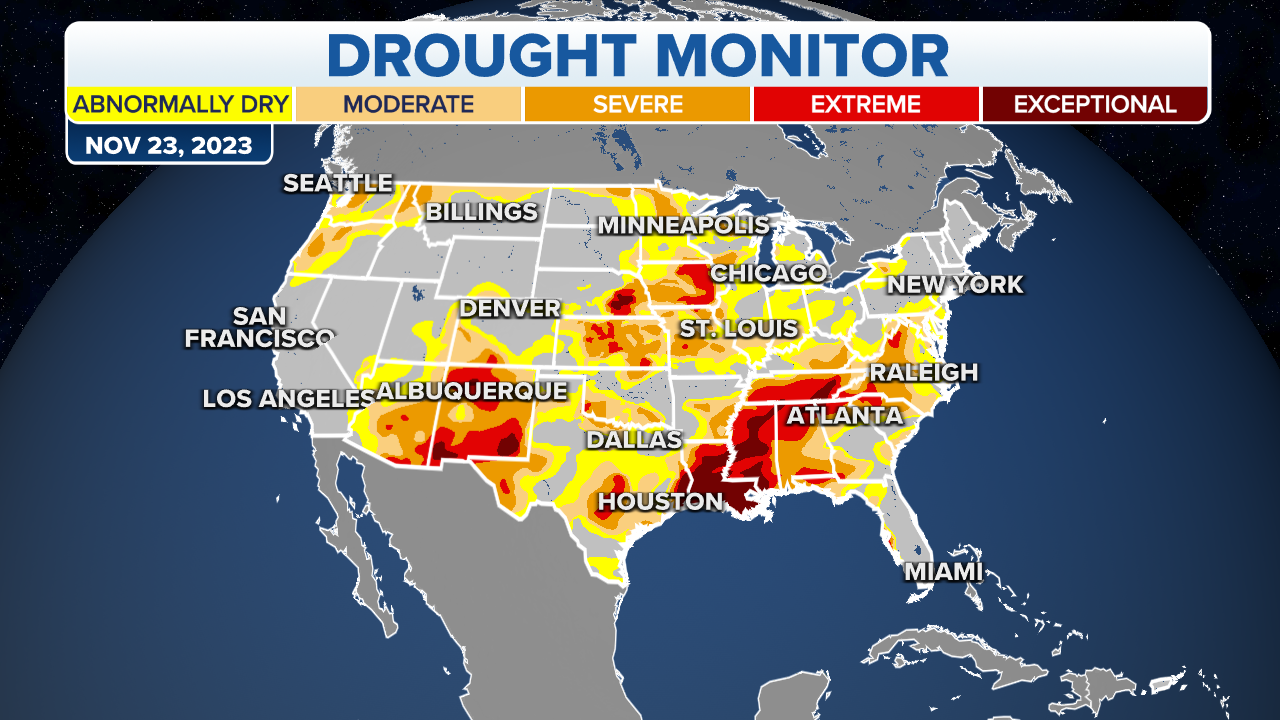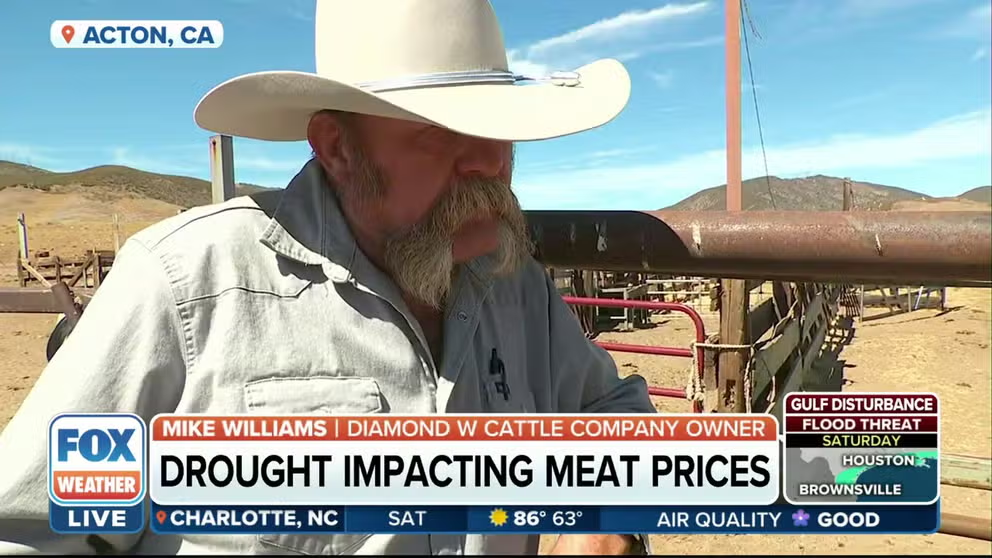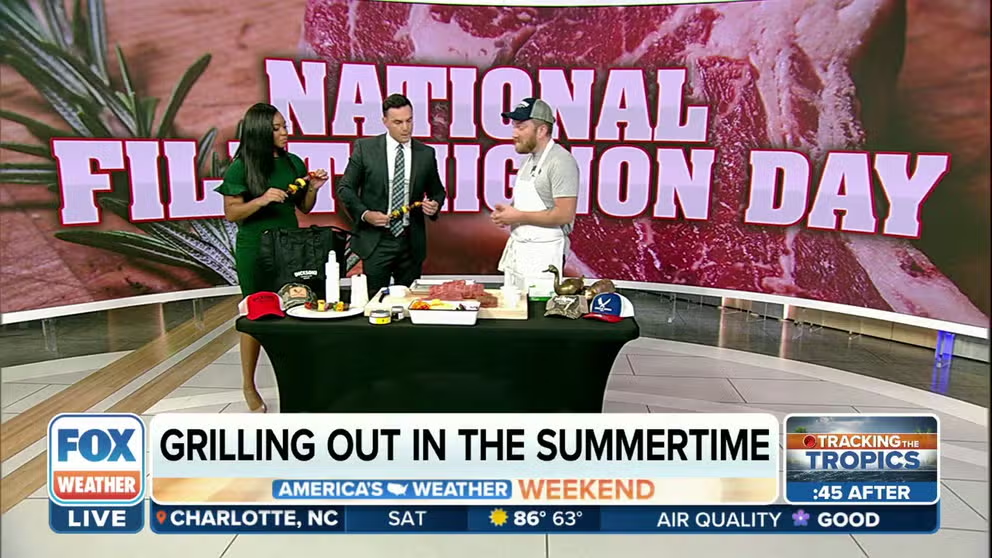American ranchers blame drought for higher meat prices at grocery stores
Fewer cows mean fewer calves and ultimately less meat in the years to follow. The USDA expects beef production next year to drop by 1.9 billion pounds – a 7% decline.
Drought is driving up meat prices, American ranchers say
American ranchers blame the drought for higher meat prices at the grocery stores. FOX Business' Kelly O'Grady is at a California ranch to see how the dry environment affects consumers.
ACTON, Calif. – Cattle farmers have been experiencing some of the worst drought conditions ever.
The ground is tough for grazing, and many ranchers have had to cull their herd because it's more economical than feeding them.
Fewer cows mean fewer calves and ultimately less meat in the years to follow. The USDA expects beef production next year to drop by 1.9 billion pounds – a 7% decline.
HOW TO WATCH FOX WEATHER ON TV
And consumers shopping at grocery stores have probably noticed their steaks and burgers are more expensive. It's a domino effect and experts say that trend could get worse in the years to come.

A worker prepares a customer's meat order at Harmons Grocery store in Salt Lake City, Utah, U.S., on Thursday, Oct. 21, 2021.
(George Frey/Bloomberg / Getty Images)
The American Farm Bureau Federation reports drought conditions, particularly in the West and Southern Plains, are one of the reasons that more heifers are entering the slaughter pipeline, which means a smaller cattle inventory this year and a smaller calf crop for 2023 and beyond.
Eight states have reported 50% or more pasture and rangeland as poor to very poor, the bureau said. Texas came in with 91% rated as poor or very poor, followed by Arkansas at 72%.
SUMMER’S HOMESTRETCH: AUGUST WEATHER OUTLOOK
"The rise in the number of heifers entering feed lots is very important, because these females are the reproductive engine responsible for replacing the cattle inventory that is lost to slaughter, death and other disappearance," said economist Bernt Nelson with the American Farm Bureau Federation.
And when drought causes pasture conditions to decline, heifers that would typically be kept for replacements are instead being placed into feed lots, Nelson adds.
Heat, drought affect meat production, prices
Looking for another reason to fire up the grill this weekend? This should do it: it's National Filet Mignon Day! But the weather -- everything from heat to drought -- is affecting meat production. And that means prices are going up. Mitch Willis, head chef and butcher from Dickson's Farmstand Meats joins FOX Weather.
"More heifers being slaughtered means fewer heifers available to produce calves. Fewer calves mean a smaller cattle supply in 2023," he said.
The Diamond W Cattle Company in Acton, California, have 200 cows across 12,500 acres. Owner Mike Williams said he is running about a third of the number of cattle that they would normally run on the ranch if there was normal rainfall.
"Because of the severity of the drought, that's pretty common across the West," Williams said. "A lot of ranchers are having to reduce or liquidate their herds because the input costs are so high."
DROUGHT-PARCHED WEST LOOKS TO MIGHTY MISSISSIPPI FOR SOLUTIONS TO WATER CRISIS
Feed and transportation costs are also increasing which is cutting into the bottom line.
"Farmers are having to make decisions about how to handle increased input costs at the same time as drought conditions," Nelson said.
"A lot of these other mitigation measures a rancher might use aren't available to them, so the numbers of the total cattle are down, which makes the price of beef go up," Williams adds.

(FOX Weather)

